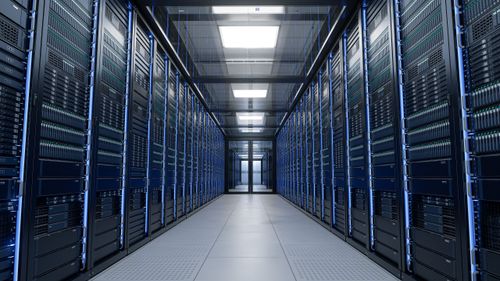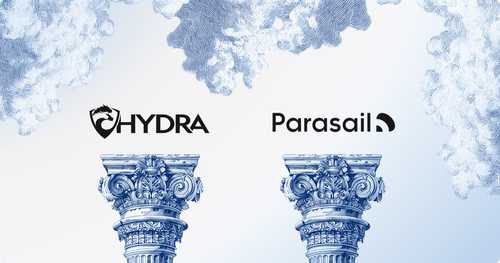Bare Metal Is the Optimal AI Factory Off-Take Strategy

With forecasts for AI infrastructure investments expected to exceed $5 trillion by the end of 2030, there is an explosion of new entrants examining the risk and reward of purchasing AI hardware as a yield-generating instrument.
The most important question for them to answer: Where is the off-take coming from, and how do they get it?
The Core Challenge: Monetizing Compute Infrastructure
There are many competing answers. Traditionally, purchasing compute hardware with the intention of monetizing it through some form of rental usage has necessarily meant starting an entire cloud hosting business.
That means offering a complex assortment of technologies such as virtual machines, containers, storage, managed services, and more. This complexity introduces an enormous amount of execution risk. Customers are not just signing up for GPU hours; they are signing up for a distribution mechanism that can deliver those hours reliably, efficiently, and at scale.
New entrants with little or no experience building a cloud hosting business are ill-suited to design, implement, and maintain these models. However, they should at least understand them, and why one model in particular, bare metal provisioning, is maybe surprisingly growing as the most de-risked and scalable strategy for generating consistent GPU server utilization and ROI.
An Overview of Cloud Product Layers
The cloud stack is complex, composed of many layers of hardware, software, and managed services that represent a full spectrum of offerings and operational complexity.
Each (simplified) layer can be:
- Offered to customers directly to generate third-party rentals, or
- Consumed internally by a cloud provider to create higher-level offerings.
This dynamic represents not just technical progressions in the stack but also economic evolution in the value chain, much like a crude oil producer refining its own supply.
Virtualization
Often considered the most straightforward offering, virtualization was the first product offered by Amazon Web Services (AWS).
Virtual machines emulate an entire operating system or virtual server, using a portion of the physical server’s resources. GPU servers can be virtualized using a hypervisor, with each GPU (or more) distributed to a separate discrete customer.
For example, an 8-GPU server could be shared by up to 8 customers, each running independent and segregated workloads.
Containerization
Containers similarly discrete and partitioned portions of server resources. Unlike virtual machines that recreate a full operating system, containers run a single application or workload with only the minimal dependencies it needs.
This makes them less flexible but far more efficient. Generally, one container equals one GPU workload, striking a balance between resource control and performance.
Functions-as-a-Service (FaaS)
Also known as “serverless,” FaaS provides dynamic and metered allocation of compute resources.
Instead of fixed hardware allocation, customers write and execute “functions” that run on shared servers and pay only for the hardware cycles consumed.
While FaaS is still limited in compatibility with GPU workloads compared to CPU workloads, it enables GPUs to serve multiple customers simultaneously, provided sufficient demand exists.
Inference-as-a-Service (IaaS)
Also known as Models-as-a-Service. Some customers prefer not to manage AI infrastructure or GPUs at all. They simply want to interact with open-source AI model APIs using prompts and just get responses.
In these cases, the provider determines:
- Which models to host
- How to tune them for performance
- How to allocate resources between models and users
This is the most abstracted and least flexible layer. Customers are bound to whatever performance and configuration the provider offers. However, it delivers turnkey functionality with minimal overhead for end users.
Bare Metal: The Foundation Layer
Bare metal is the least abstracted form of compute provisioning. It has no virtualization, no hypervisors, and no software abstractions.
While AWS’s first external product (EC2) was virtual machines, it was only made possible by years of building a sophisticated internal bare-metal management layer.
All other technologies ultimately rely on bare metal. It sits at the bottom of the compute value chain, forming the foundation for every cloud, container, or inference product above it.
Simplified Cloud Value Chain
| Layer | Abstraction Level | Example Use | Flexibility | Typical Users | Relative Complexity |
|---|---|---|---|---|---|
| Inference-as-a-Service | Highest | AI API access | Low | SaaS customers | Very High |
| Functions-as-a-Service | High | Dynamic workloads | Moderate | Developers | High |
| Containerization | Medium | App deployment | High | DevOps teams | Moderate |
| Virtualization | Low | VM instances | High | Cloud tenants | Moderate |
| Bare Metal | None | Full server control | Very High | Infrastructure buyers | Low |
Key takeaway: The higher up you go, the greater the potential margin, but also the higher the execution risk and complexity.
Bare Metal Is the Contrarian and Correct Positioning for AI Factories
Choosing the right technology and distribution strategy for your AI infrastructure is critical, whether you are building in-house or partnering with a third-party platform. It determines:
- Who you can sell to
- How you can monetize utilization
- What your long-term risk profile looks like
The natural reaction, especially among cloud-native engineers, is to move higher up the stack, seeking differentiation through multi-tenancy and developer tooling. The logic seems sound: squeeze more customers per server, add software value, and improve margins.
But this reasoning is fundamentally flawed.
The Execution Risk
The further up the stack you climb, the more execution risk you assume.
While higher-level offerings may promise better margins, they also demand superior software execution, constant innovation, and ongoing differentiation in an intensely competitive ecosystem.
You are no longer betting purely on AI demand; you are betting on your ability to out-innovate rivals in software and service delivery.
If your platform loses its competitive edge, utilization drops overnight, leaving expensive hardware underused. A single misstep in product-market fit or a faster competitor can render months of GPU capacity idle.
Why Bare Metal De-Risks the Model
Bare metal monetization dramatically mitigates these risks.
While we cannot predict which software paradigms will dominate AI workloads in the future, there is one thing we can always be sure about:
Every workload, container, or inference model must ultimately run on bare metal.
Bare metal is the crude oil of AI infrastructure, the universal foundation that fuels every layer above it.
This means it has the largest total addressable market (TAM) at any given moment. Every virtualization, containerization, or AI inference platform still depends on underlying physical servers. And their interest in renting that bare metal instead of owning it themselves is rapidly climbing.
Comparative Risk–Reward Summary
| Strategy | Potential Margins | Market Size | Risk Profile | Scalability | Core Dependency |
|---|---|---|---|---|---|
| Bare Metal | Moderate | Largest (foundational layer) | Low | High | None (base layer) |
| Virtualization / Containers | High | Medium | Medium | Moderate | Bare Metal |
| Functions / Inference Services | Very High | Small (niche) | High | Variable | Bare Metal, often containers |
Bare metal offers predictable utilization, lower execution risk, and maximum flexibility across all future software paradigms.
As history shows, most investors regret chasing high-margin models when faced with uneven revenue streams and large capital obligations.
The Wholesale vs. Retail Analogy
This dynamic mirrors the wholesale vs. retail divide found in many traditional industries.
Retail offers higher margins but comes with intense risk, including inventory management, customer service, theft, chargebacks, and marketing overhead.
Wholesale, by contrast, provides lower margins but higher volume, consistency, and resilience.
Bare metal is the wholesale model for compute and AI infrastructure: stable, scalable, and fundamentally essential.
Costco did not dominate by chasing retail margins; it optimized for volume, reliability, and predictable returns. The same logic applies to bare metal providers.
Risk Specialization and Market Evolution
None of this is meant to diminish the importance of higher-level software platforms. Their innovation is critical and drives the entire ecosystem forward.
However, the risk profiles of hardware infrastructure and software development are fundamentally different and should remain separate.
Rentable bare metal provides what these software ventures need most:
- Flexible, scalable infrastructure
- On-demand provisioning
- Performance consistency for experimentation
This specialization enables mutual growth. Hardware investors focus on capex efficiency and liquidity, while software innovators pursue cutting-edge use cases on top of that reliable foundation. By offering bare metal, especially with blended terms, AI Factories enable software and developer platforms to experiment and take risks without worrying about underutilizing expensive hardware.
A Historical Parallel: The Semiconductor Revolution
A historic analogue to this trend is the transformation of semiconductor manufacturing in the 1990s.
Intel once dominated with a verticalized model that involved designing and manufacturing its own chips. This limited innovation to those who could afford their own foundries.
When Morris Chang founded TSMC in 1987, he proposed a radical idea:
“What if we just focus on being the best foundry possible, and let others design the chips?”
By offering foundry-as-a-service, TSMC empowered a wave of design-only startups, including NVIDIA, to innovate without building their own factories.
This division of labour reshaped the industry, fueling explosive innovation. Today, bare metal as a service (BMaaS) is poised to play the same enabling role for AI infrastructure by enabling a whole new generation of clouds and software platforms that don’t need to buy bare metal at all.
Bare Metal as the New Foundry Model
Bare metal is the new dedicated foundry of the AI era.
Software-only AI platforms are the new “chip designers,” depending on accessible, high-performance, and flexible compute to experiment and scale.
Together, these two segments, hardware infrastructure and software innovation, form a self-reinforcing feedback loop that drives growth across the ecosystem.
This model ensures the capital-intensive layer (bare metal) remains stable while enabling software platforms to expand market adoption and generate the revenue needed to sustain infrastructure investment.
Brokkr: The BMaaS Platform for AI Factories
For all these reasons, Hydra has spent four years building the premier bare metal platform for GPU servers and “operating system” for AI Factories.
While Hydra focuses on no-frills bare-metal delivery, the engineering behind it is extensive and designed to create the most powerful and flexible BMaaS platform ever built.
The Brokkr platform standardizes provisioning and management across 117+ server models, delivering consistent 90% or greater utilization across multiple data centers and GPU configurations.
By pooling resources from various providers and AI Factory Franchise partners, Hydra ensures a steady supply and liquidity of GPU infrastructure. This allows AI platforms to reliably find standardized bare metal capacity as their needs evolve.
Final Takeaway
Bare metal is no longer the “low-tech” choice. It is the smart infrastructure investment for those seeking scalable, consistent, and durable returns in the AI era.
By anchoring the ecosystem and powering every innovation above it, bare metal has become the optimal off-take strategy for AI factories worldwide.



